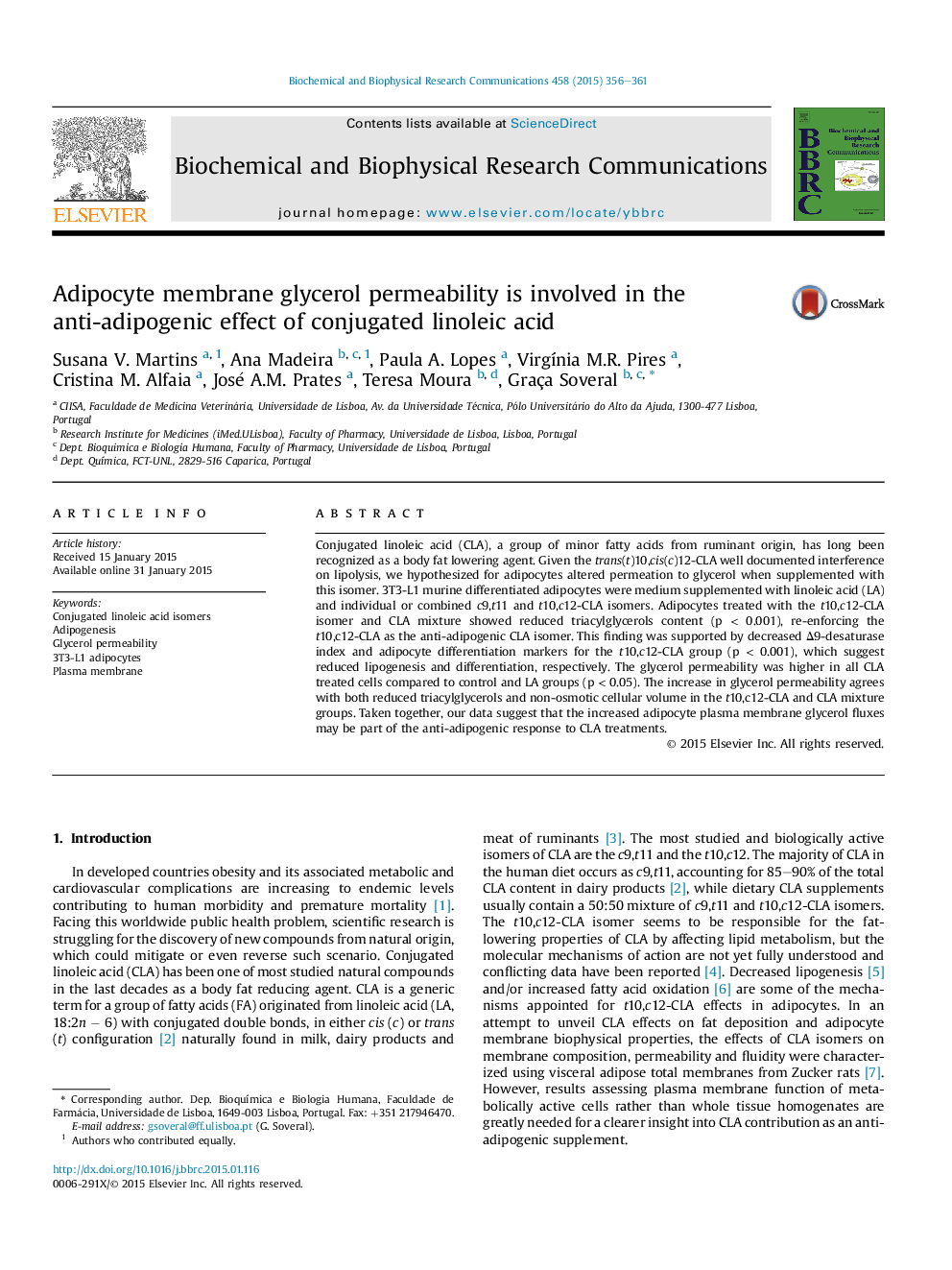| Article ID | Journal | Published Year | Pages | File Type |
|---|---|---|---|---|
| 10753300 | Biochemical and Biophysical Research Communications | 2015 | 6 Pages |
Abstract
Conjugated linoleic acid (CLA), a group of minor fatty acids from ruminant origin, has long been recognized as a body fat lowering agent. Given the trans(t)10,cis(c)12-CLA well documented interference on lipolysis, we hypothesized for adipocytes altered permeation to glycerol when supplemented with this isomer. 3T3-L1 murine differentiated adipocytes were medium supplemented with linoleic acid (LA) and individual or combined c9,t11 and t10,c12-CLA isomers. Adipocytes treated with the t10,c12-CLA isomer and CLA mixture showed reduced triacylglycerols content (p < 0.001), re-enforcing the t10,c12-CLA as the anti-adipogenic CLA isomer. This finding was supported by decreased Î9-desaturase index and adipocyte differentiation markers for the t10,c12-CLA group (p < 0.001), which suggest reduced lipogenesis and differentiation, respectively. The glycerol permeability was higher in all CLA treated cells compared to control and LA groups (p < 0.05). The increase in glycerol permeability agrees with both reduced triacylglycerols and non-osmotic cellular volume in the t10,c12-CLA and CLA mixture groups. Taken together, our data suggest that the increased adipocyte plasma membrane glycerol fluxes may be part of the anti-adipogenic response to CLA treatments.
Keywords
Related Topics
Life Sciences
Biochemistry, Genetics and Molecular Biology
Biochemistry
Authors
Susana V. Martins, Ana Madeira, Paula A. Lopes, VirgÃnia M.R. Pires, Cristina M. Alfaia, José A.M. Prates, Teresa Moura, Graça Soveral,
